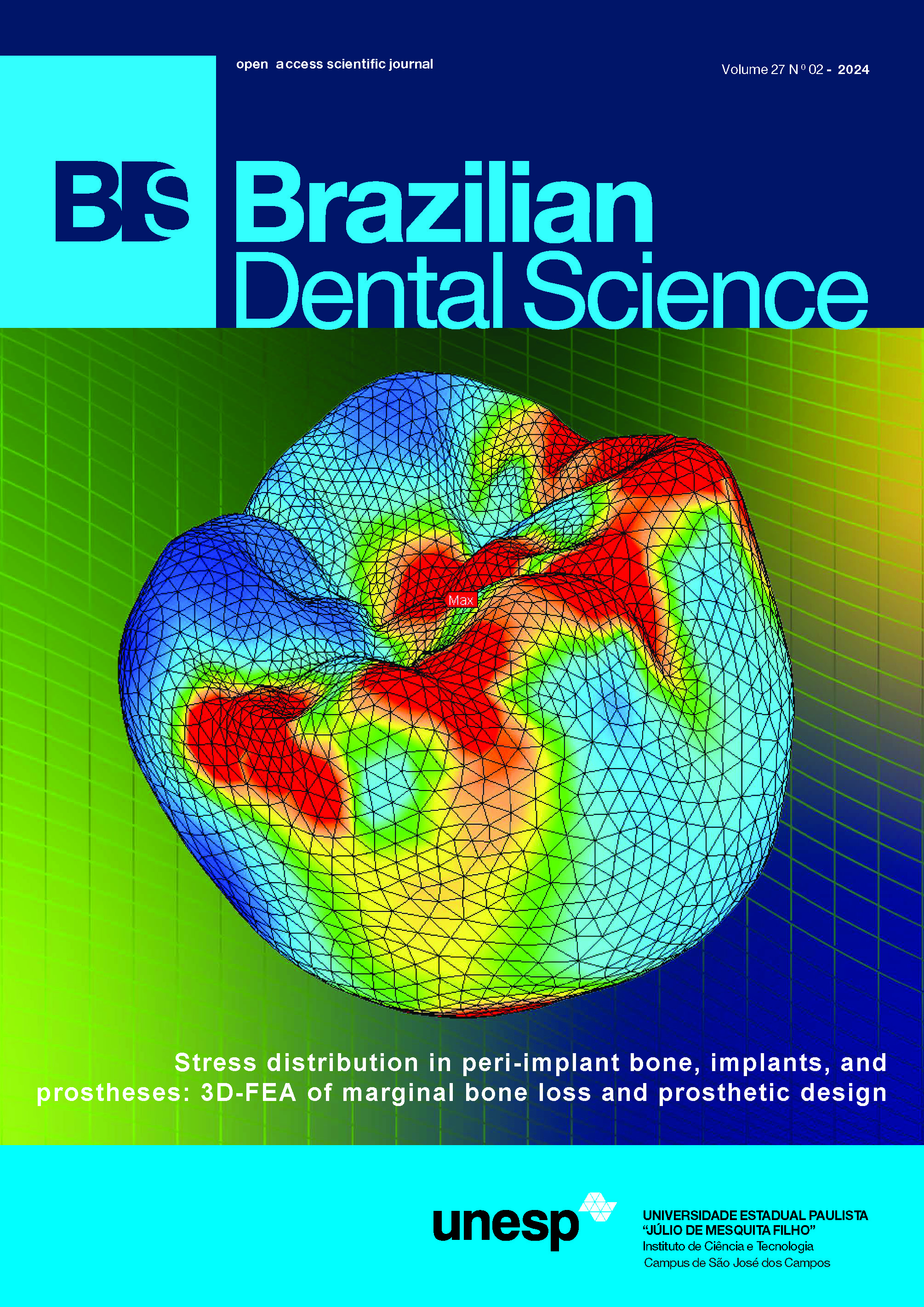Evaluation of antiseptic mouthwashes protocol against SARSCoV- 2 on orthodontic appliances (an in vitro study)
DOI:
https://doi.org/10.4322/bds.2024.e4196Resumo
Objective: The objective of this study was to evaluate the impact of daily mouthwash rinsing protocols recommended against SARS-CoV-2 on metal ions discharged from fixed orthodontic appliances, specifically Nickel (Ni) and Chromium (Cr). Material and Methods: Total of 400 hemi-arch fixed appliances were segregated into two groups, namely Nickel Titanium (NiTi) and Stainless Steel (SS), based on the type of archwire employed. Each set was submerged in 2% povidone-iodine, 1% hydrogen peroxide, 0.2% chlorhexidine and cetylpyridinium chloride mouthwashes. Distilled water was used for comparative measurements of the ions released as a control group (n=10/group). They were incubated for four periods at 37°C (one hour, twenty-four hours, one, and 3 weeks). Nil and Cr ions released from the fixed appliance were evaluated by atomic absorption spectroscopy. The data were analyzed by the Kruskal-Wallis test and paired comparison analysis. Results: The worst levels of Ni and Cr liberated from the SS group observed in povidone-iodine mouthwash at 1.173 and 1.701 ppm, respectively, while the chlorhexidine mouthwash released accepted level of Ni and Cr at 0.033 and 0.056 ppm, respectively. The NiTi group displayed the appalling ions released of Ni and Cr in povidone-iodine mouthwash at 1.87 and 2.4 ppm, respectively. Whereas the released levels of Ni and Cr ions from the chlorhexidine group and cetylpyridinium chloride were 0.048 and 0.127 ppm, respectively, with significant differences between the tested groups and intervals. Conclusion: Chlorhexidine and Cetylpyridinium chloride mouthwashes were the appropriate options for orthodontic patients to minimized ions released according to this study protocol.
KEYWORDS
Metal release; Mouthwash; Nickle Ions released; SARS-CoV-2; WHO.
Downloads
Downloads
Publicado
Como Citar
Edição
Seção
Licença
TRANSFERÊNCIA DE DIREITOS AUTORAIS E DECLARAÇÃO DE RESPONSABILIDADE
Toda a propriedade de direitos autorais do artigo "____________________________________________________________________" é transferido do autor(es) para a CIÊNCIA ODONTOLÓGICA BRASILEIRA, no caso do trabalho ser publicado. O artigo não foi publicado em outro lugar e não foi submetido simultaneamente para publicação em outra revista.
Vimos por meio deste, atestar que trabalho é original e não apresenta dados manipulados, fraude ou plágio. Fizemos contribuição científica significativa para o estudo e estamos cientes dos dados apresentados e de acordo com a versão final do artigo. Assumimos total responsabilidade pelos aspectos éticos do estudo.
Este texto deve ser impresso e assinado por todos os autores. A versão digitalizada deverá ser apresentada como arquivo suplementar durante o processo de submissão.




























